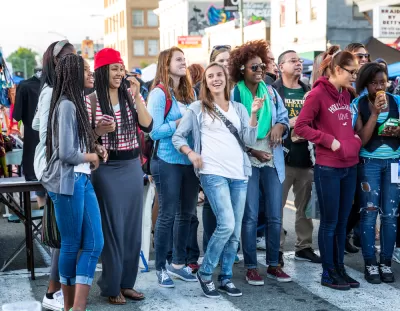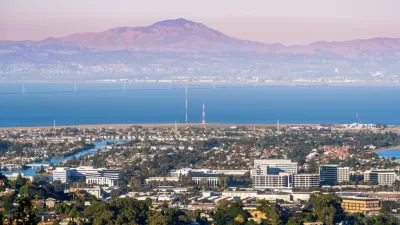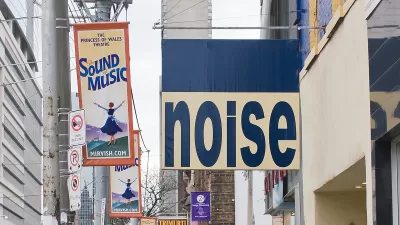While narratives about gentrification and segregation dominate the headlines, one study found evidence of increased integration around the United States.

"In all parts of the United States, the number of neighborhoods that sustain a mix of black, white, Asian and Hispanic residents over time is growing quickly," reports Gillian Kiley.
Kiley is sharing the findings of a new study published in Demography and written by researchers at Brown University and the University of Wisconsin-Whitewater. "Global Neighborhoods: Beyond the Multiethnic Metropolis," as the study is titled, "assessed 342 metropolitan regions with populations of at least 50,000 over the period from 1980 to 2010 to determine whether integrated neighborhoods existed outside of the nation's most diverse metropolitan centers."
The authors chose the term "global neighborhoods" to describe places where whites and blacks live alongside Hispanics, Asians, or both. According to the study, global neighborhoods "are showing up in large numbers in each type of metropolitan center, throughout the country, in urban areas with different histories and combinations of populations."
While the study might seem at first glance to report unequivocally good news, there are also a few reasons to pause. "While the number of global neighborhoods is on the rise, the study also found increasing numbers of all-minority neighborhoods caused by white residents moving out of previously mixed areas—close to a 50 percent increase over the 30-year period," adds Giley.
FULL STORY: Integrated neighborhoods more common across the US, study finds

Maui's Vacation Rental Debate Turns Ugly
Verbal attacks, misinformation campaigns and fistfights plague a high-stakes debate to convert thousands of vacation rentals into long-term housing.

Planetizen Federal Action Tracker
A weekly monitor of how Trump’s orders and actions are impacting planners and planning in America.

In Urban Planning, AI Prompting Could be the New Design Thinking
Creativity has long been key to great urban design. What if we see AI as our new creative partner?

Pedestrian Deaths Drop, Remain Twice as High as in 2009
Fatalities declined by 4 percent in 2024, but the U.S. is still nowhere close to ‘Vision Zero.’

King County Supportive Housing Program Offers Hope for Unhoused Residents
The county is taking a ‘Housing First’ approach that prioritizes getting people into housing, then offering wraparound supportive services.

Researchers Use AI to Get Clearer Picture of US Housing
Analysts are using artificial intelligence to supercharge their research by allowing them to comb through data faster. Though these AI tools can be error prone, they save time and housing researchers are optimistic about the future.
Urban Design for Planners 1: Software Tools
This six-course series explores essential urban design concepts using open source software and equips planners with the tools they need to participate fully in the urban design process.
Planning for Universal Design
Learn the tools for implementing Universal Design in planning regulations.
planning NEXT
Appalachian Highlands Housing Partners
Mpact (founded as Rail~Volution)
City of Camden Redevelopment Agency
City of Astoria
City of Portland
City of Laramie





























